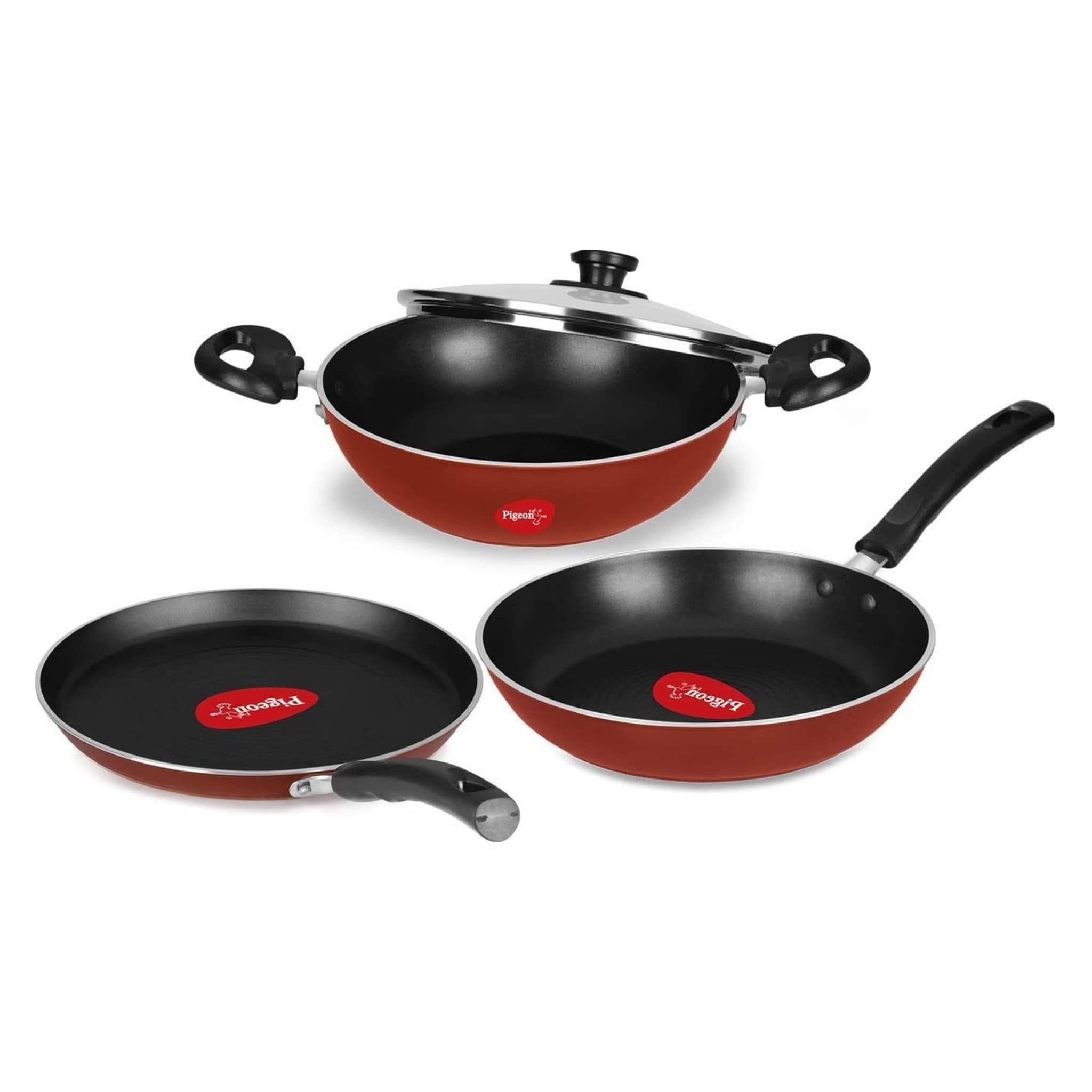Induction base cookware is a popular choice for modern kitchens due to its efficiency, durability, and compatibility with induction cooktops. However, to ensure longevity and optimal performance, proper maintenance and cleaning are essential. Improper handling can lead to damage, loss of efficiency, and even safety hazards.
This guide provides a detailed approach to maintaining and cleaning induction base cookware, helping you keep your kitchenware in excellent condition for years.
Understanding Induction Base Cookware
What Is Induction Base Cookware?
Induction base cookware is designed with a ferromagnetic material at the bottom, allowing it to work efficiently on induction cooktops. Unlike traditional stovetops that heat the cookware through direct flames or electric coils, induction cooktops generate heat using electromagnetic energy, which directly heats the cookware.
Materials Used in Induction Base Cookware
Induction-compatible cookware is usually made from materials such as:
-
Stainless Steel: Durable, resistant to rust, and excellent for even heating.
-
Cast Iron: Retains heat well but requires proper seasoning and maintenance.
-
Enameled Cast Iron: Has a protective coating to prevent rust and is easier to clean.
-
Multi-layered or Clad Cookware: Combines materials like aluminum or copper with a magnetic base for improved performance.
To check if cookware is induction-compatible, place a magnet at the base—if it sticks, the cookware is suitable for induction cooking.
Best Practices for Maintaining Induction Base Cookware
Proper maintenance extends the life of induction base cookware and ensures it retains its efficiency. Here are essential care tips:
Avoid Overheating
Induction cooktops heat cookware quickly, making it essential to avoid prolonged exposure to high temperatures. Overheating can damage nonstick coatings, discolor stainless steel, and cause warping in some materials.
Use the Right Utensils
Metal spatulas, spoons, or whisks can scratch nonstick or enameled surfaces. Instead, use wooden, silicone, or plastic utensils to preserve the coating and prevent damage.
Prevent Scratches and Stains
-
Always lift cookware instead of dragging it on the cooktop to prevent scratches.
-
Clean spills immediately to avoid permanent stains on both the cookware and the induction surface.
-
Avoid using harsh scrubbers or abrasive cleaners that can wear down the cookware’s protective layers.
Proper Storage Techniques
-
Stack cookware carefully using protective pads or cloth between pans to prevent scratching.
-
Store lids separately or use organizers to keep cookware in good shape.
-
Ensure cookware is completely dry before storing to prevent rust and mold growth.
How to Clean Induction Base Cookware Effectively
Regular cleaning helps maintain the appearance and performance of induction base cookware. Follow these methods based on the type of cookware material.
Cleaning Stainless Steel Induction Cookware
-
Daily Cleaning: Wash with warm water, mild dish soap, and a soft sponge. Rinse thoroughly and dry immediately to prevent water spots.
-
Removing Stains: For burnt food or discoloration, make a paste of baking soda and water, apply it to the stained area, and scrub gently.
-
Deep Cleaning: Boil a mixture of vinegar and water in the pan to loosen stubborn stains, then scrub lightly with a non-abrasive sponge.
Cleaning Nonstick Induction Cookware
-
Gentle Washing: Avoid harsh detergents and scrubbers. Use a soft sponge with warm, soapy water.
-
Handling Stubborn Residue: Fill the pan with warm water and dish soap, let it soak for 10–15 minutes, then wipe gently.
-
Avoiding Damage: Never use steel wool or metal brushes, as they can wear down the nonstick coating.
Cleaning Cast Iron Induction Cookware
-
No Soaking: Avoid soaking in water, as it can lead to rust formation.
-
Cleaning Process: Wipe with a damp cloth or scrub with a brush and mild soap if needed.
-
Re-seasoning: After cleaning, apply a thin layer of oil and heat the cookware briefly to maintain its seasoning and prevent rust.
Cleaning Enameled Cast Iron
-
Avoid Abrasives: Use a soft sponge with mild detergent. Harsh scrubbing can damage the enamel coating.
-
Stubborn Stains: Make a paste of baking soda and water, apply it to the stained areas, and let it sit for a few minutes before rinsing.
-
Prevent Chipping: Avoid dropping or stacking enameled cookware without protection.
NOTE : Induction base cookware had been preferred for its even heat distribution and energy efficiency. Its durable construction and compatibility with modern kitchens made cooking effortless. Upgrade your kitchen with premium cookware from Oweg today!
Tips for Removing Burnt Food and Tough Stains
Using Baking Soda and Vinegar
-
Sprinkle baking soda on the burnt area, add vinegar, and let it bubble for a few minutes.
-
Scrub gently with a sponge and rinse thoroughly.
Boiling Water Method
-
Fill the cookware with water and bring it to a boil.
-
Let it simmer for a few minutes to loosen food particles.
-
Scrape gently with a spatula or sponge.
Using Lemon and Salt
-
Cut a lemon in half, dip it in salt, and scrub the stained area.
-
Rinse with warm water for a fresh and clean surface.
Common Mistakes to Avoid
Using Abrasive Cleaning Tools
Scouring pads, steel wool, and rough brushes can scratch and damage cookware surfaces. Always use soft sponges or cloths.
Skipping Regular Maintenance
Neglecting to clean cookware immediately after use can lead to stubborn stains, discoloration, and a reduction in efficiency.
Using High Heat Frequently
Constant exposure to high temperatures can damage nonstick coatings and cause warping in stainless steel cookware.
Not Drying Cookware Properly
Leaving cookware wet can result in rust, especially in cast iron or stainless steel materials. Always dry cookware completely before storing.

Conclusion
Maintaining and cleaning induction base cookware properly ensures its longevity, efficiency, and safety in your kitchen. Regular cleaning, careful handling, and proper storage can prevent common issues like staining, warping, and coating damage.
By following the right maintenance techniques for different materials, you can preserve the performance and appearance of your cookware, making every cooking experience smooth and enjoyable.
For More Insightful Articles Related To This Topic, Feel Free To Visit : fastpanda



